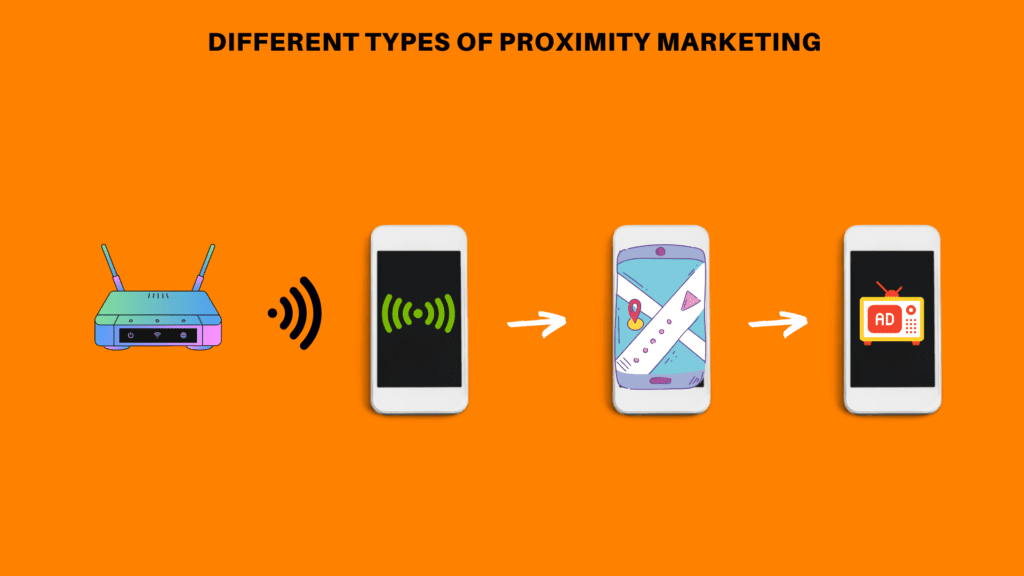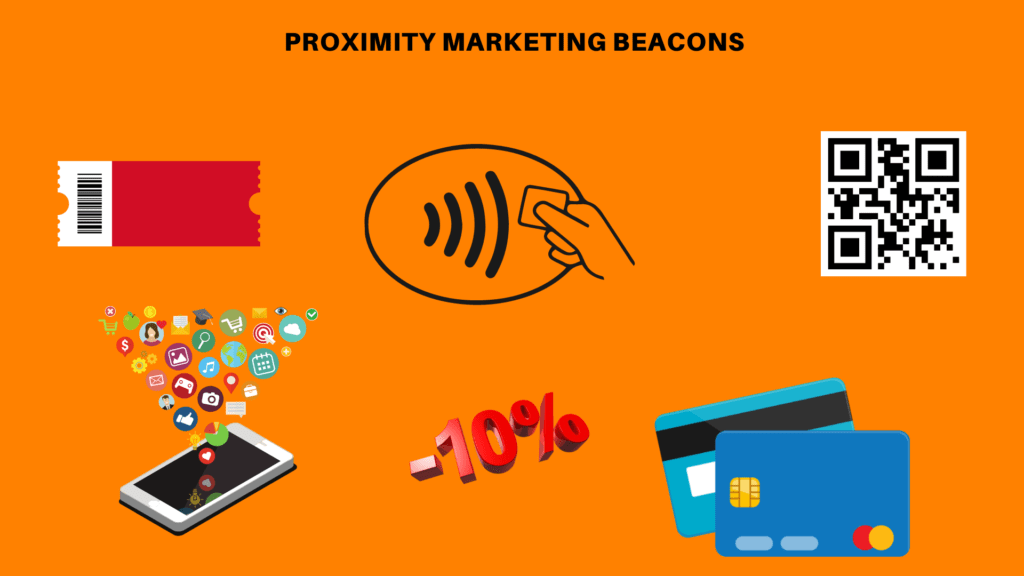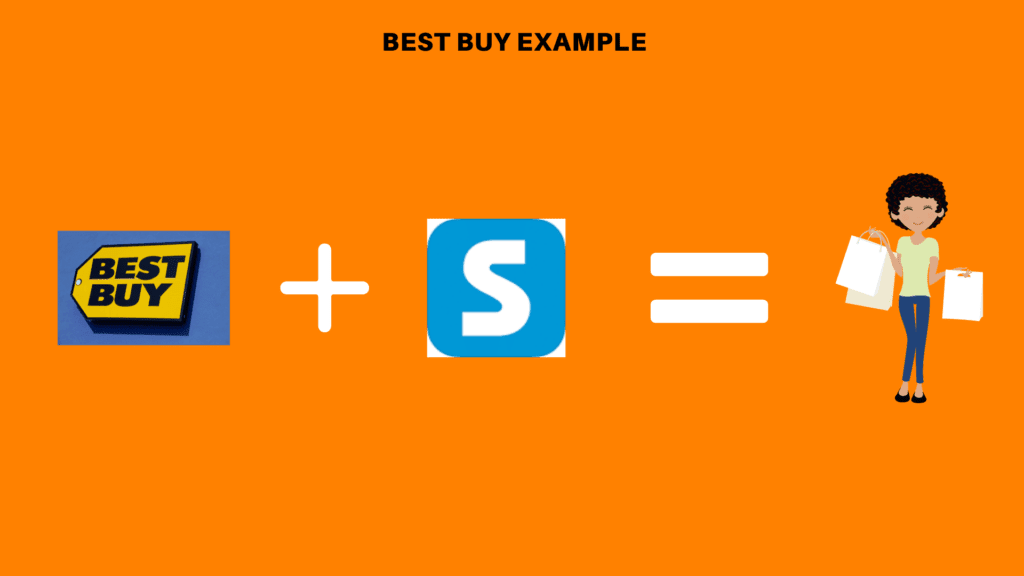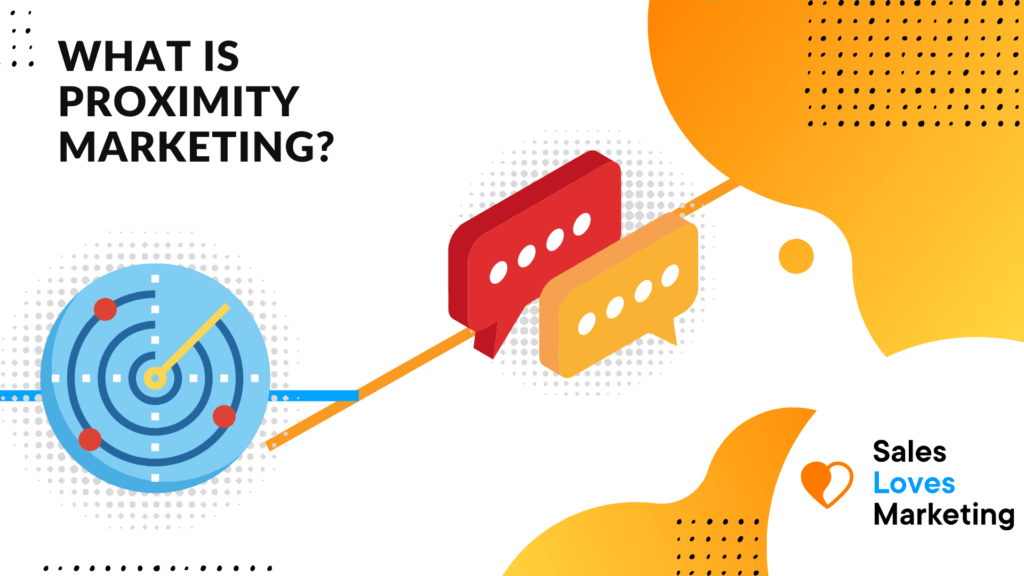If you’ve ever been out to a restaurant, bar, mall, or any retail location, you will have most likely experienced businesses targeting you with very specific ads that are relevant to your current interests. This is the main strategy behind proximity marketing. The massive rise in mobile advertising has enabled local businesses and brands to push out advertisements based on their current interests. In this post, we will dive into what proximity marketing is, how it works, and how it can serve as an effective marketing strategy to help you grow your business.
What is Proximity-Based Marketing
How Does Proximity Marketing Work?
Different Types of Proximity Marketing
Who Uses Proximity Marketing
How Effective Is Proximity Marketing
Examples of Proximity Marketing
What is Proximity-Based Marketing?
Proximity-based marketing involves targeting your customers with personalized advertising based on how close a customer is to a specific location and inducing them to make a purchase. It’s a marketing strategy that is used by companies to enhance the customer experience with the intent of making additional sales. This is usually done with the use of mobile technology and tracking consumer’s behaviors across different apps and physical locations.
It’s a highly targeted form of advertising which allows businesses to run promotions to interested consumers within a small target area. Marketing companies can target a specific city, radius, or even neighborhoods in which they can run highly targeted ads based on previous consumer interest and behavior.
How Does Proximity Marketing Work?
Proximity Marketing includes different advertising offers, marketing messages, customer support, deals, coupons, scheduling, and more. It works by distributing certain information to improve a customer’s shopping experience based on hyperlocal targeting.
Recommended Reading: How Sticker Marketing Can Create a Buzz For Your Business
The great thing about proximity marketing is that it’s not meant to interrupt the customer’s experience. It’s meant to help improve customers purchasing decisions by advertising products or services to them which they are already using.
Different Types of Proximity Marketing

Common uses of proximity marketing include distribution of media at social events and concerts, flights, social applications, gaming, specific retail check-ins, local ads, and more. It can also take different forms through different types of technology. Phones, tablets, and laptops can be targeted through different types of technologies. Let’s take a look at some of them below.
Geofencing
As you change your location with your cellular device, your connection is managed between different towers. There are different types of text messaging systems that utilize your location to send push notifications or text messages that target devices within a specific region. This is known as Geofencing and it’s a unique type of marketing that is used to send messages to only certain devices within a specific location.
Bluetooth
Retail locations such as malls can utilize Bluetooth technology to connect to your smartphone. To use this there will usually be some sort of permission required. You can serve certain content to the customer via Bluetooth to send them exclusive deals and coupons and incentivize them to make purchases. It’s something new that retail locations are exploring to better connect with their customers and their interests.
RFID
RFID tags work by storing a serial identification number which is meant to identify your device or a membership. The tag transmits the ID information to the reader. These are becoming more and more useful for casinos as a quick and effective way to identify certain players within their casinos. They can keep track of how much a player is winning and losing and pitch their further promotions.
Proximity ID
Much like RFID tags, proximity IDs function in the same way. These are cards or contactless cards that communicate with a remote receiver within a few inches. These include membership cards, security cards for access, or special club access. They are used as proof of exclusivity in most marketing cases.
QR Codes
QR codes are perhaps one of the most popular and commonly used examples of proximity marketing. Restaurants can make use of QR codes to generate menus for customers and more. When someone scans a QR code you know exactly where they are and send them a piece of advertising that aligns with what they are doing.
Who Uses Proximity Marketing?

Proximity marketing is used by large retail companies such as Macy’s, McDonald’s, Walmart, and many others. Retailers usually involve the help of “proximity marketing beacons” to help them spread their message. Proximity marketing beacons are things such as apps, loyalty cards, and more.
The customers can get mobile coupons through the app which can trigger them to make a purchase. The apps can track how often you visit a specific location on average and send you to deal and coupons when it’s been a while since your last visit. This type of strategy is a way to entice customers to come back and spend money.
In other industries such as real estate, agents can show ads to home buyers who are in the market for new homes depending on their location, budget, and time to purchase. There can always be an effective way to use proximity marketing to draw in customers and help them.
How Effective is Proximity Marketing?
Proximity marketing can be extremely effective if executed correctly. First, you have to have a solid understanding of your customer and their purchasing tendencies. From there it’s important to understand the most effective marketing beacon that your customers respond well to.
Using proximity marketing as part of your advertising strategy gives your business the ability to improve your targeting and track your results.
Proximity Marketing Examples
Best Buy Example

Best Buy used a marketing strategy to help increase their sales at their stores by providing a highly personalized experience for their customers. They tapped into their own app as well as a third party shopping rewards app known as Shopkick to give customers rewards simply for stepping inside Best Buy. This strategy worked to increase the amount of foot traffic to a local Best Buy and actually resulted in a modest sales increase for the day the promotion was ran.
